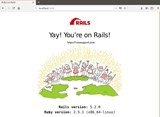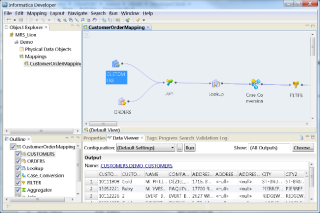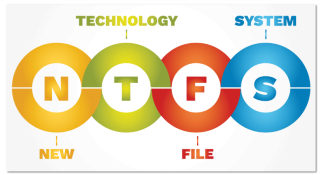Configuración de Adonis.js en Ubuntu 14
Introducción Adonis.js es un MVC Framework para NodeJs que le permite escribir aplicaciones web con menos código. Toma prestados conceptos de otros marcos sólidos.
Node.js is both open source and free, and is used for a variety of purposes. To name a few, Node.js is very efficient for serving dynamic content. If you want a quick and efficient way to get a blog up and running, Node.js can simplify the process. Based on JavaScript, Node.js can be used by most web developers who wish to perform server-side operations without having to learn a completely new language. Node.js is also very memory efficient, handles all requests asynchronously, and the included package manager has access to the largest repository in the world.
Node.js has several advantages, such as the following:
npm.Unfortunately, though, Node.js does have it's share of disadvantages:
Update your package manager:
yum update -y
Install Node.js:
yum install nodejs -y
If you are prompted to import a key, enter Y to continue.
Ensure the installation was successful:
node -v
npm -v
All Node.js files must end with .js. For example, a simple quadratic solver can be called Quadratic.js. Having said that, you can call it whatever you'd like as long as the first requirement is met.
Programming languages usually have an API available, and Node.js is no exception. If you are lost or need to find the syntax for a function (or method), check out the Node.js docs.
NOTE: As mentioned previously, Node.js has a code-base that is updated constantly and as such, functions here may no longer work in later versions.
In this section, we'll be learning about the most basic program you can create. To begin, head to /~ or /root. Creating your first project is as simple as creating a JS file:
nano HelloWorld.js
Once you are inside your favourite text editor, enter the following:
// For reference, comments are made using '//' added before or after a line. Comments are ignored by the Node.js interpreter.
console.log("Hello, world!"); // console.log() simply outputs text to the terminal.
Exit and save.
Now, launch your program:
node HelloWorld.js
You will see the following output:
[root@test-server ~]# node HelloWorld.js
Hello, world!
In this section, we'll be learning how to perform basic mathematical operations. To begin, head to your /root directory again and create a file called MathTest.js:
nano MathTest.js
Paste the following code into the file:
var a = 5; // Variables are declared using 'var variableName = value'. The value can be a string, integer, boolean value (ie. true/false) or an object.
var b = 10;
var c = "Hello, world!";
console.log(c); // This line will output the contents of variable c.
console.log("a = " + a + ", b = " + b); // This line prints out the respective values for a & b.
console.log("a + b = " + (a + b)); // This line prints out the result of (a + b) or (5 + 10). The result should be 15.
Save and exit.
When you execute your MathTest.js program, you will see the following:
[root@test-server ~]# node MathTest.js
Hello, world!
a = 5, b = 10
a + b = 15
In this section, we'll be learning how to start up a Node.js webserver. To begin, create a file called WebTest.js:
nano WebTest.js
Paste the following code:
// This line includes the HTTP module. Having it included allows us to use it's methods and functions to start a working webserver.
var http = require("http");
var a = 5, b = 10;
http.createServer(function (request, response) {
// This will simply output "Request received!" to your terminal when you visit your page.
console.log("Request received!");
// This line tells your browser that it should be expecting HTML content to be returned.
response.writeHead(200, {'Content-Type': 'text/html'});
// The following line adds "Hello, world! a + b = 15" to the body. The <i></i> tags will italicize the text.
response.write("<i>Hello, world! a + b = " + (a + b) + "</i>");
// Finally, we'll tell the browser that we're done sending data with 'response.end()' below.
response.end();
}).listen(8080);
Once you've saved the file, run your new program:
[root@test-server ~]# node WebTest.js
Now, visit http://(YOUR_SERVER_IP):8080. Make sure to have your firewall configured correctly to allow the request.
You will see Request received! on your terminal and the following in your browser:
Hello, world! a + b = 15
NOTE: In order to close (shut down) WebTest.js, use the following key combination: CTRL + C.
Now that you understand some of the basics, the following section will introduce you to using 3rd party modules, installed via npm.
In this section, we'll be extending our first "Hello, world!" program. To begin, we'll be installing a package called colo. This package allows us to use colours on the terminal.
To begin, we'll be using npm to install the package:
npm i colo
For reference, you can remove the package with npm remove colo
Once the process completes, you will have access to the colo package. Now, once you've opened HelloWorld.js up, add the following line at the top:
var colour = require("colo");
Where you see console.log(...), encapsulate "Hello, world!" with brackets. At the start of the brackets, add colour.red.bold:
console.log(colour.red.bold("Hello, world!"));
Your final code will look like the following:
var colour = require("colo");
console.log(colour.red.bold("Hello, world!"));
Save, exit and run your program. The output will be exactly the same as before, except "Hello, world!" will now be red (and bold) in your terminal.
Congratulations on completing all the basic programs. This should provide you with the knowledge to interpret (at least most) of the code used in other tutorials. Hopefully, you don't stop here — there are many other things that you can do with Node.js!
If you find that Node.js isn't the language for you, removing it is as simple as the following:
yum remove nodejs -y
Introducción Adonis.js es un MVC Framework para NodeJs que le permite escribir aplicaciones web con menos código. Toma prestados conceptos de otros marcos sólidos.
Hapi.js es un marco Node.js rico, robusto y poderoso diseñado para crear aplicaciones web en el ecosistema Node.js. Su diseño sencillo hace que
PM2 es un administrador de procesos Node muy popular que facilita la ejecución de aplicaciones NodeJS. PM2 facilita el reinicio de aplicaciones, reinicia automáticamente el bloqueo
En este tutorial, aprenderá cómo configurar una API RESTful completa, que atenderá las solicitudes HTTP utilizando Node.js y Express, mientras que el proxy inverso
Este artículo le mostrará cómo implementar su aplicación Node dentro de un contenedor Docker. Nota: Este tutorial asume que tienes Docker instalado y leído
Desarrollado por el motor Chrome V8, Node.js es un lenguaje popular utilizado para crear aplicaciones escalables rápidas. Ya ha impulsado numerosos proyectos, incluyendo
Despliegue de Unikernels de Javascript en Vultr Unikernels son sistemas operativos de aplicación única. A diferencia de los sistemas operativos de uso general como Linux, unikernel
Ruby on Rails (RoR) es un marco escrito en el lenguaje de programación Ruby que le permite usar Ruby en combinación con HTML, CSS y programas similares.
Introduction Strapi is an open source NodeJS Content Management Framework dedicated to build secure and scalable production-ready API applications an
Instalar herramientas de construcción Se necesitarán varias herramientas. Ejecute el siguiente comando: apt-get install make g ++ libssl-dev git Descargar Node.js source It i
¿Usando un sistema diferente? Introducción Sails.js es un marco MVC para Node.js, similar a Ruby on Rails. Hace para el desarrollo de aplicaciones modernas ver
En este tutorial, aprenderemos cómo configurar una aplicación web Koa.js para producción, utilizando Node.js. También vincularemos un dominio de muestra, con
Ghost es una plataforma de blogs gratuita y de código abierto escrita en node.js, completamente personalizable y dedicada a la publicación. Prepare el servidor: actualización
En este tutorial, instalaremos un servidor web básico Express.js, utilizando Node.js, un tiempo de ejecución de Javascript basado en el motor Chromes V8, en nuestro Vultr VP
Este artículo lo guiará a través de la implementación de su aplicación Meteor en un Vultr VPS con Ubuntu 14.04. También puede funcionar en otras distribuciones de Linux (intente un
GruntJS es un corredor de tareas de JavaScript escrito sobre NodeJS. Se puede utilizar para automatizar tareas repetitivas para su aplicación, como minificación, compilación
NodeBB es un software de foro moderno, de código abierto y basado en NodeJS. Con los clientes en mente, NodeBB ofrece a los propietarios de la comunidad funciones potentes y facilidad de uso t
Nuxt.js: The Universal Framework Nuxt.js is a JavaScript framework designed for quickly creating universal Vue.js applications. It is most famously notabl
¿Usando un sistema diferente? Ghost es una plataforma de blogs de código abierto que está ganando popularidad entre los desarrolladores y usuarios comunes desde su lanzamiento en 2013. yo
Las aplicaciones Node.js son populares por su capacidad de escalar. La ejecución de múltiples procesos concurrentes en múltiples servidores produce una menor latencia y un mayor tiempo de actividad
ZPanel, un panel de control de alojamiento web popular, se bifurcó en 2014 a un nuevo proyecto llamado Sentora. Aprende a instalar Sentora en tu servidor con este tutorial.
Aprende cómo instalar Vtiger CRM, una aplicación de gestión de relaciones con el cliente, en CentOS 7 para aumentar tus ventas y mejorar el servicio al cliente.
Esta guía completa le mostrará cómo configurar un servidor Counter-Strike 1.6 en Linux, optimizando el rendimiento y la seguridad para el mejor juego. Aprende los pasos más recientes aquí.
Los ataques de ransomware van en aumento, pero ¿puede la IA ayudar a lidiar con el último virus informático? ¿Es la IA la respuesta? Lea aquí, sepa que la IA es una bendición o una perdición
ReactOS, un sistema operativo de código abierto y gratuito, está aquí con la última versión. ¿Puede satisfacer las necesidades de los usuarios de Windows de hoy en día y acabar con Microsoft? Averigüemos más sobre este estilo antiguo, pero una experiencia de sistema operativo más nueva.
Whatsapp finalmente lanzó la aplicación de escritorio para usuarios de Mac y Windows. Ahora puede acceder a Whatsapp desde Windows o Mac fácilmente. Disponible para Windows 8+ y Mac OS 10.9+
Lea esto para saber cómo la Inteligencia Artificial se está volviendo popular entre las empresas de pequeña escala y cómo está aumentando las probabilidades de hacerlas crecer y dar ventaja a sus competidores.
Recientemente, Apple lanzó macOS Catalina 10.15.4, una actualización complementaria para solucionar problemas, pero parece que la actualización está causando más problemas que conducen al bloqueo de las máquinas Mac. Lee este artículo para obtener más información
13 Herramientas comerciales de extracción de datos de Big Data
Nuestra computadora almacena todos los datos de una manera organizada conocida como sistema de archivos de diario. Es un método eficiente que permite a la computadora buscar y mostrar archivos tan pronto como presiona buscar.










